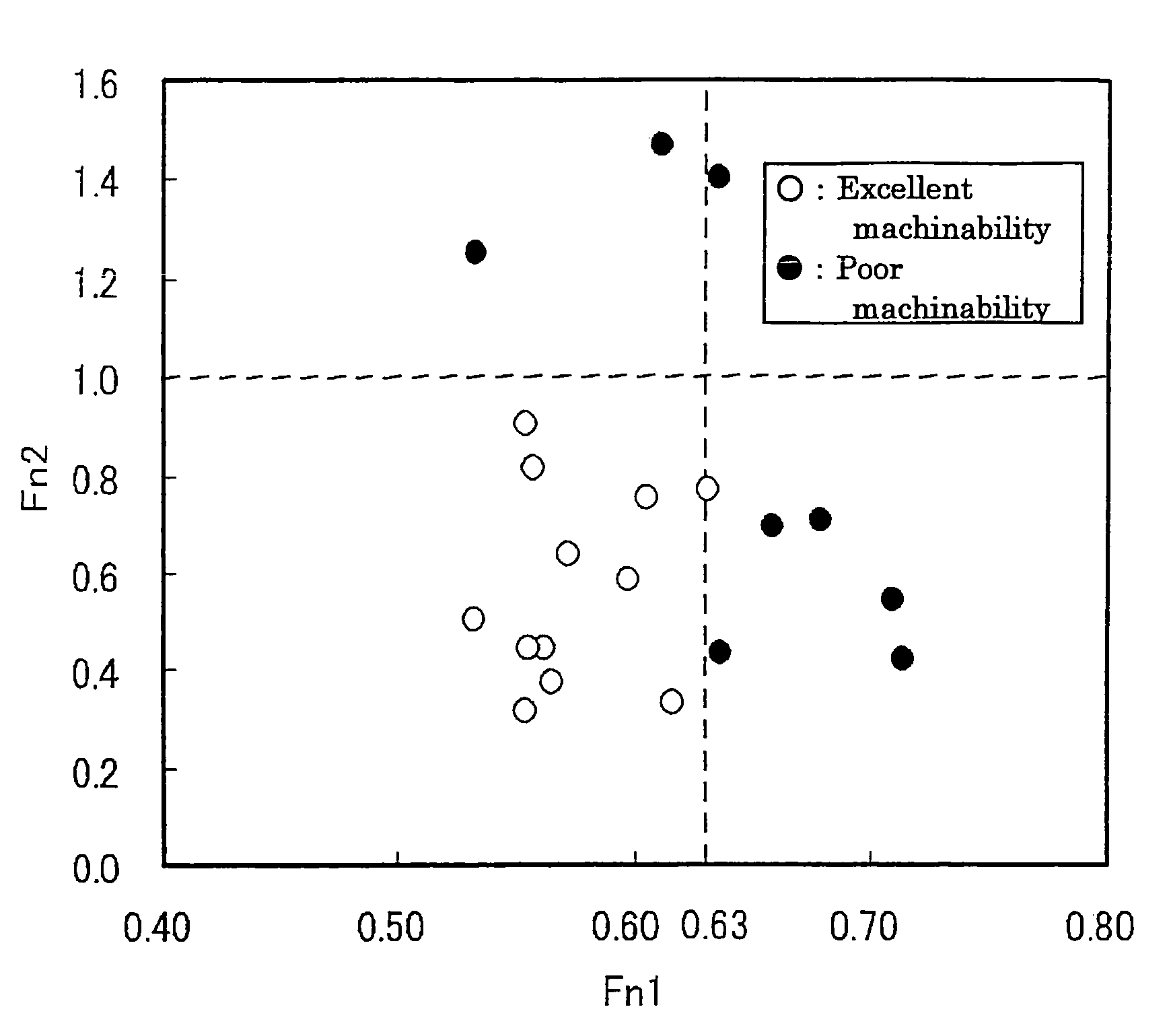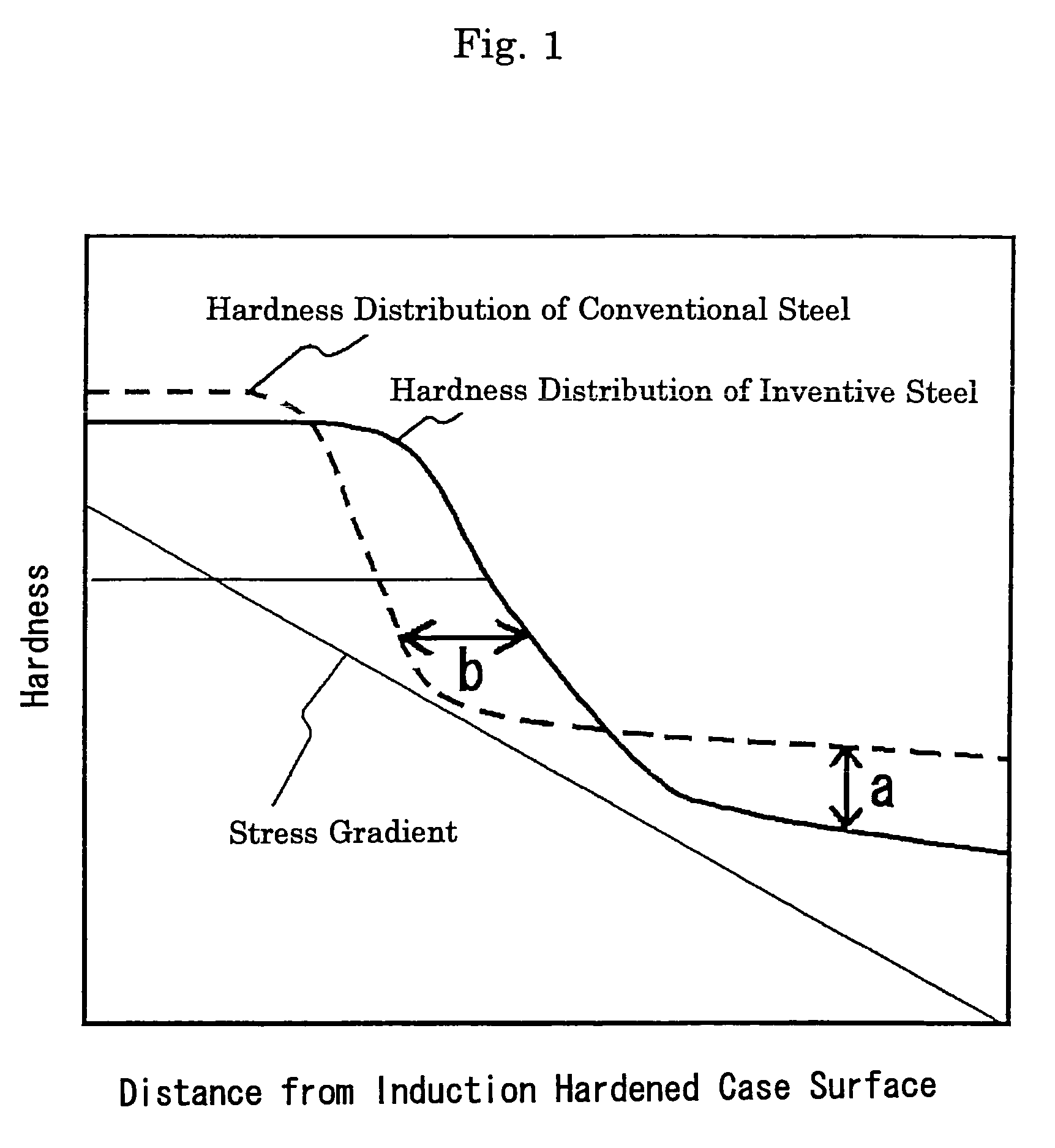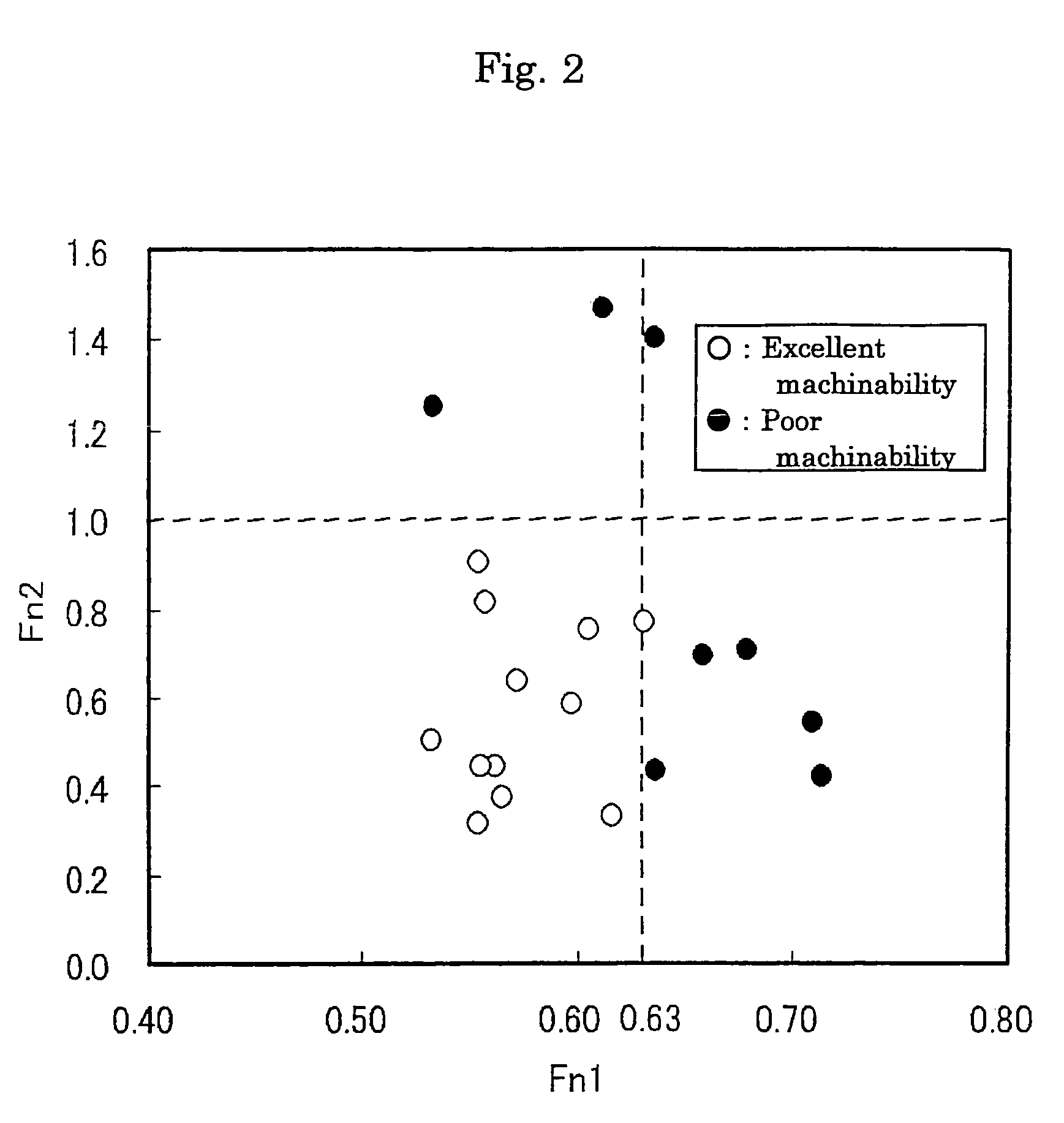Hot forged non-heat treated steel for induction hardening
a technology of induction hardening and hot forged steel, which is applied in the field of hot forged non-heat treated steel for induction hardening, can solve the problems of deterioration of machinability, formation of hard alsub>2/sub, and deterioration of machinability, and achieve the effect of excellent machinability and fatigue strength
- Summary
- Abstract
- Description
- Claims
- Application Information
AI Technical Summary
Benefits of technology
Problems solved by technology
Method used
Image
Examples
example
[0073]The steels of Test Nos. 1 to 20 shown in Table 1 were melted using a 3-ton electric furnace, cast and stood to cool in an ingot state. The steels of Test Nos. 1 to 10 in Table 1 are steels of inventive examples having chemical compositions within the range regulated by the present invention, and the steels of Nos. 11 to 20 in Table 1 are steels of comparative examples with chemical compositions out of the range regulated by the present invention.
[0074]Each ingot was made into a 180 mm-cubic billet by blooming, and then heated to 1200° C. or higher by a normal method so as to form steel bars of 100 mm and 20 mm in diameter by hot rolling.
[0075]The steel bar, which is 100 mm in diameter, was subjected to high-temperature normalizing and held at 1200° C. for 60 minutes followed by standing to cool, and then cut in a length of 70 mm, whereby machinability evaluation test specimens were obtained.
[0076]The machinability was examined by using a cemented carbide-made gun drill, 6.2 mm...
PUM
| Property | Measurement | Unit |
|---|---|---|
| diameter | aaaaa | aaaaa |
| diameter | aaaaa | aaaaa |
| diameter | aaaaa | aaaaa |
Abstract
Description
Claims
Application Information
 Login to View More
Login to View More - R&D
- Intellectual Property
- Life Sciences
- Materials
- Tech Scout
- Unparalleled Data Quality
- Higher Quality Content
- 60% Fewer Hallucinations
Browse by: Latest US Patents, China's latest patents, Technical Efficacy Thesaurus, Application Domain, Technology Topic, Popular Technical Reports.
© 2025 PatSnap. All rights reserved.Legal|Privacy policy|Modern Slavery Act Transparency Statement|Sitemap|About US| Contact US: help@patsnap.com



